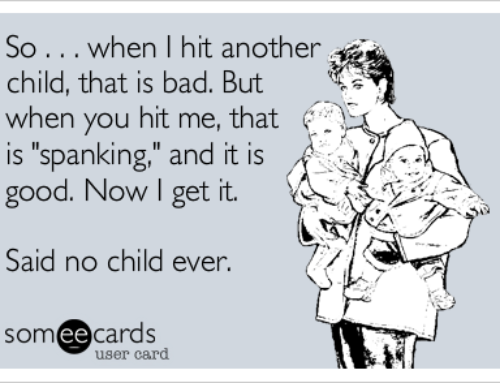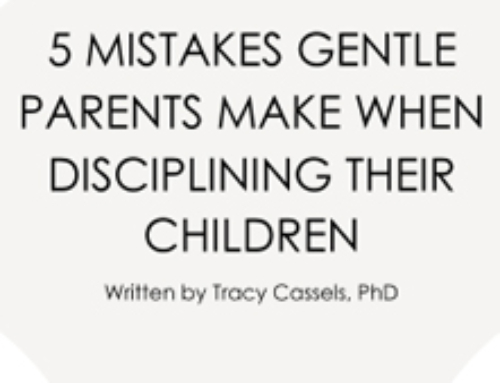
You’re with your child having a good time when something happens and it’s like a switch is flicked and all of a sudden your child attacks you. It may be you said no to something, they got scared and lashed out, or something else. Frankly it doesn’t really matter what it is because it won’t change what happens next. In most cases, parents try to physically stop their child. Or they may stay put and wait for their child to stop, getting more and more angry the longer this goes on. I’ve heard parents saying, “Stop!” and waiting for that message to sink in and the child to actually stop doing whatever it is. Only it usually doesn’t happen.
Folks, this is insanity. As Albert Einstein famously said, “The definition of insanity is doing the same thing and expecting different results.”
I would go a step further and add that this is insane because it’s putting the power of change solely on the child who is in no fit position to be wielding such power. Are you really going to let your well-being be in the hands of an irate child with little to no self-control?
Let’s go even one more step further and consider what it is you’re teaching your child when you stay put like that. What do they learn about engagement when angry and how to handle it?
You see, our kids can’t help but lash out because of the way their brains are developing and wired at the time. This is not them being assholes for the fun of it, but because they themselves are struggling. If we start with the first level of insanity, you sitting with your child telling them to stop and just waiting for a different outcome is truly insane. You’re ignoring their developmental capacity and the degree to which they are clearly overwhelmed and unable to shift gears. When you ask a child to stop like that, you aren’t helping them stop, you’re demanding something that they are incapable of giving. Like me sitting down and demanding you pay me $10,000.00 then wondering why you aren’t.
When we move to the next level of insanity, we have to ask, “Who is in charge of your life?” I think most of us like to think we have some level of agency in our outcomes, though of course we acknowledge there are lots of areas we have less than optimal outcomes. But if I asked you what control you had in a situation in which a small person went on a rampage, would you say “none”? That you had to stay put until said small person regained their self-control? Or that the only thing you could do was to be physically forceful with said person? What if it wasn’t your child or even a child at all, but someone smaller and weaker than you? Would you have the same reply?
The thing we forget is that in many situations we do have agency and it’s up to us to exercise it in a respectful manner. This doesn’t include being physical with others whenever we can prevent it and of course it doesn’t mean handing over that agency to someone else. So the question becomes, what can you do that’s respectful and helpful to the situation?
Walk away. Not far, not out of anger, but with purpose of safety and making clear that whatever is happening isn’t something you want to be a part of. Even just two steps away can sometimes be enough for a child to calm and stop. Sometimes you may need to walk further away if the child is in a right state and you need a breather to remain calm yourself. But you can always tell your child that you don’t want to get hurt and don’t want to get angry so you’re taking space for yourself to remain calm so you can help them when they are ready. This doesn’t lay blame at the feet of a struggling child. It doesn’t cause them more harm. It doesn’t get them defensive. It does tell them you want to be there to help them. It does get you time to calm yourself.
Perhaps more importantly than that it models self-control. It models how to leave a situation with kindness when needed. It models walking away from a physical confrontation. This is that third step out in which we consider the lessons we’re teaching our children in how we respond. If we want our kids to be those who walk away from a violent person, we have to show them how. If we want them to not take the burden of someone else’s loss of control without boundaries, we have to show them. This is what we need to be aware of when we choose to walk away kindly. We are teaching our children how to have compassion for someone who is struggling, how to offer help, but also how not to get caught up in their own state of disarray.
That is what we should all be aiming for.






Maybe in a future post you could help clarify the connection between your two posts, the one about children “wanting attention” and the other about “walking away”.
Is the difference that parents should consider walking away when the child is acting in mean, hurtful, or violent ways, but that the parents should not walk away when the child is acting in distress and hunger and so on?
Sometimes those manifestations seem so similar, and of course you aren’t suggesting contradictory points. That is why maybe some clarification would help confused parents like me to distinguish when to draw near and when to back away from a child doing similar outbursts of behvaiour.
Thank you
The posts were
https://evolutionaryparenting.com/he-just-wants-attention-when-our-kids-are-acting-out-for-connection/
https://evolutionaryparenting.com/the-importance-of-walking-away/
This is a fantastic question – thank you! As you’ve already touched on, one of the biggest differences is the level of violence/aggression/etc. This may come out when seeking attention, but is also a behaviour that can cause harm to others. As I tell parents when working one-on-one with them, if you can sit and be present during violent outbursts, great! But that’s often not the case and parents end up getting angry and lashing out in return. In these instances, our best thing to do is model that we need to step away from someone who could harm us and who we won’t be able to sit quietly and calmly with.
Now, that doesn’t mean you don’t return and offer connection when/as needed. But you have to make sure it’s not going to affect how you connect – obviously, if getting angry and lashing out then you aren’t connecting!
The flipside is that when kids act out for connection, it may be throwing things or just being more tantrumy and in these moments we often feel we need to set an example before connecting and that’s what I think is wrong. The appropriateness of their request for connection doesn’t negate the need for it or diminish it’s importance. Working on how to ask for connection is a skill that comes with time and effort and practice. So if the behaviour isn’t one that will cause an outburst from us adults as we know the cause (even if we don’t like it), then connect! If it’s dangerous and we’re unable to connect, walk away until you can.
Does this help?
Thank you for your article! What I am wondering about are situations in which the siblings are in danger of being kicked or stones thrown at… Going further away together with them wouldn’t help. The kid that is being mad and trying to hurt would just follow or throw harder. Going into another room (and trying to stay in connection by words that are validating the feelings) is not possible when outside
Do you have any suggestions for a situation like that? Of course, apart from out of the situation things like trying to connect even more etc. Thank you very much for any ideas.:)